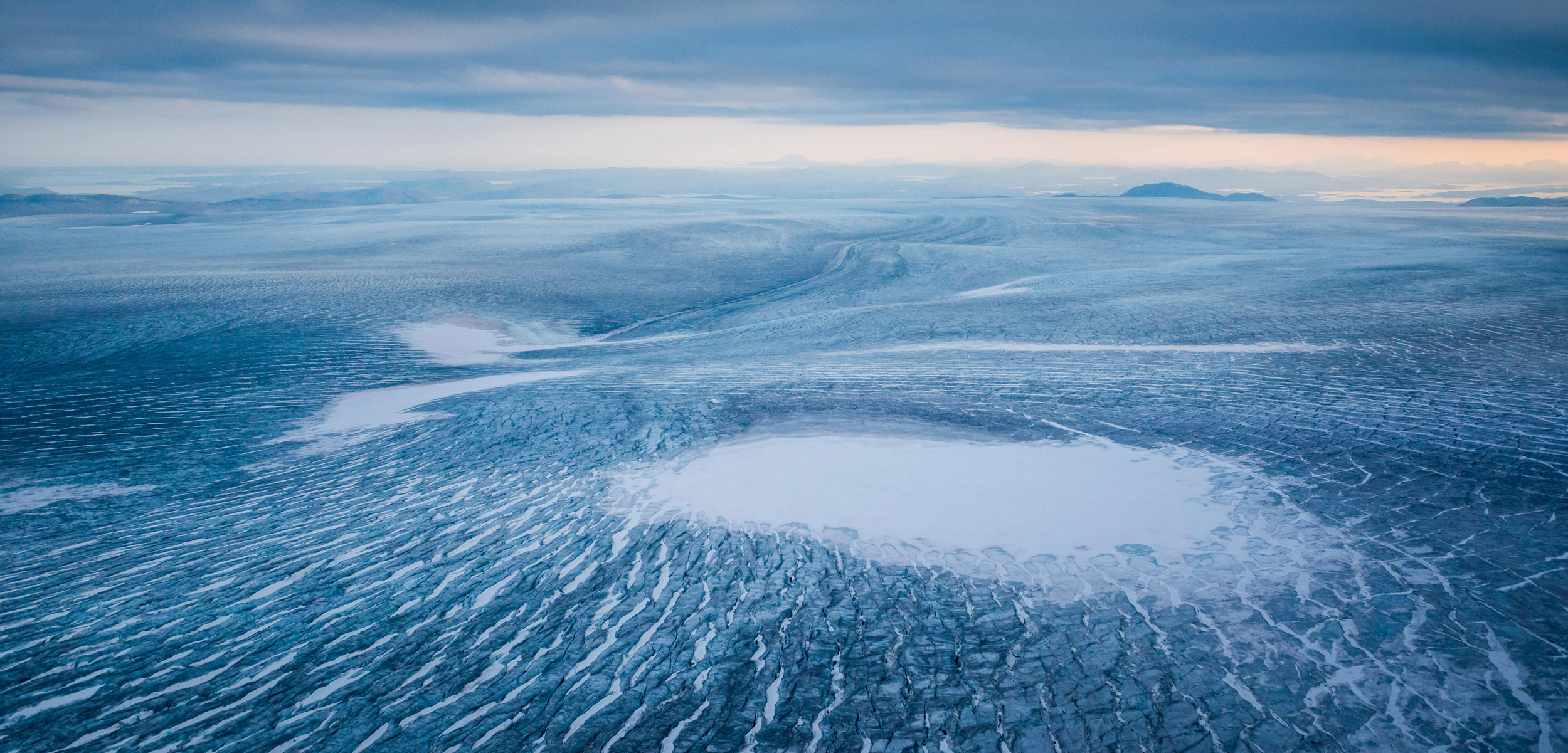The Alarming Power of Melting Arctic Ice
At least 25 times over the past 120,000 years, the temperature in Greenland swung dramatically. Now, scientists have a better understanding of why.
Article body copy
Forty-four thousand years ago, the Earth was in the grip of an ice age. The average temperature in Greenland had declined to a bitter -55 °C, about 30 °C colder than today. The ice sheets had grown thick, and the surrounding seas were capped with ice year-round. But the climate was on the verge of a dramatic shift—one that would see temperatures spike by a staggering 16.5 °C over a period of just a few decades.
Willi Dansgaard, a Danish paleoclimatologist, was the first to discover that temperatures can rise this abruptly when he examined an ice core extracted from Greenland in the late 1960s. In the years that followed, other scientists began paying attention as new ice cores confirmed that not one, but 25 similar cycles of abrupt warming and gradual cooling occurred between 120,000 and 11,000 years ago.
Since the discovery of these Dansgaard-Oeschger (D-O) cycles, named in honor of Dansgaard and his Swiss colleague Hans Oeschger, scientists have been trying to piece together what could have caused temperatures to swing so dramatically.
While the ultimate trigger for D-O cycles remains elusive, a team of researchers led by Henrik Sadatzki, a geoscientist at the Alfred Wegener Institute for Polar and Marine Research in Germany, has managed to identify a key step in the sequence of events leading to the abrupt warming.
The researchers analyzed four D-O cycles that happened between 32,000 and 41,000 years ago and discovered that just before the onset of the abrupt warming there was widespread and rapid melting of ice in the Greenland, Norwegian, and Iceland Seas—collectively known as the Nordic Seas.
Helle Kjær, a climate scientist at the Niels Bohr Institute in Denmark and coauthor of the study, explains that during the colder periods of the D-O cycles, warm water from the North Atlantic was able to make its way into the Nordic Seas at an intermediate depth. During these periods, “the sea ice was like a lid over the Nordic Seas that trapped in this heat,” Kjær says. When the sea ice began to melt and the Nordic Seas became largely ice-free, this heat was transferred from the water into the atmosphere, amplifying—or perhaps triggering—the abrupt warming events.
Compared to the ocean and atmosphere, sea ice is a very thin layer in the climate system. But its role can’t be overstated, says Alison Criscitiello, director of the Canadian Ice Core Lab at the University of Alberta, who was not involved in the study. “Sea ice is an important part of the coupled ice-ocean-climate system that can tip it one way or another due to the feedbacks that can ensue,” says Criscitiello. “It has always been thought that sea ice changes had the potential to cause the impacts shown in this study.”
The researchers were able to show that the melting of the sea ice in the Nordic Seas preceded the abrupt D-O warming (and not the other way around) by analyzing organic molecules trapped in two sediment cores collected from the Norwegian Sea. The molecules were left behind by algae that lived in sea ice during the D-O cycles. They also analyzed an ice core from East Greenland, using the level of bromine in the ice to reconstruct the changes in sea ice.
“The combination of sediment core and ice core data made it possible to determine the chronological progression of sea ice retreat and changes in the ocean circulation and climate more reliably and precisely than previously possible,” says Sadatzki.
Layers of volcanic ash from Icelandic eruptions trapped in the cores also allowed the researchers to match the timings of sea changes and the abrupt warming events. Synchronizing paleoclimate records isn’t easy, but the team did this very convincingly, says Criscitiello.
Looking back at the abrupt D-O warming events, it is difficult not to think about what is happening in the Arctic today. The ongoing sea ice retreat and warming taking place in large parts of the Arctic is strikingly similar to the rapid sea ice decline that precipitated the abrupt warming during the D-O cycles, says Sadatzki. “Our findings can be seen as a warning that ongoing sea ice retreat will further amplify climate change in the Arctic.”

